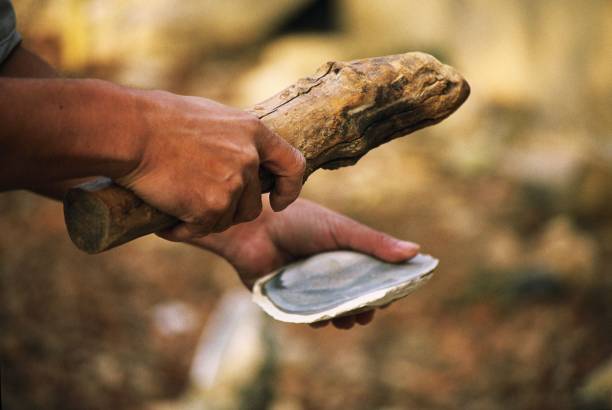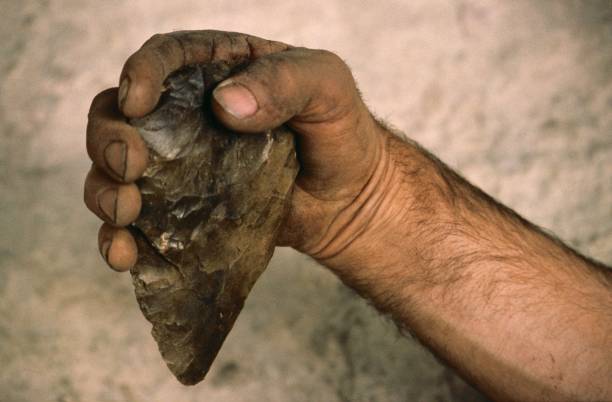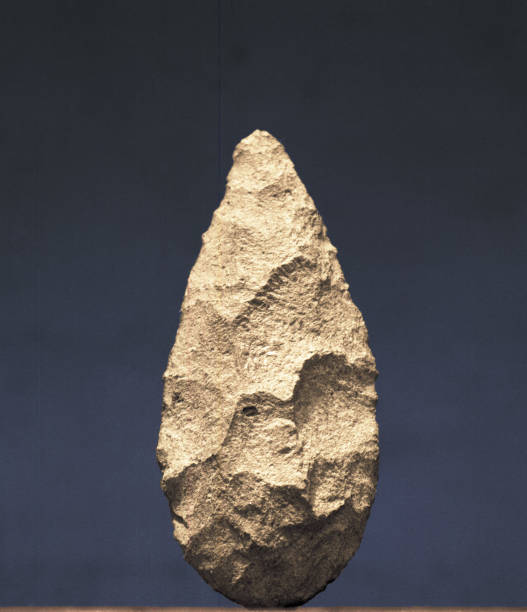The Ancient Archeulian

The term "Acheulian culture" refers to an archaeological industry and stone tool tradition associated with early humans, particularly Homo erectus and early Homo sapiens, during the Lower Paleolithic period. The Acheulian culture emerged around 1.7 million years ago and lasted until about 200,000 years ago, spanning a significant portion of the Lower Paleolithic period. Acheulian tools and artifacts have been found across Africa, Europe, parts of Asia, and the Middle East, reflecting the widespread distribution and migration patterns of early human populations.
Acheulian culture is characterized by the production of large, bifacially flaked stone tools, such as hand-axes and cleavers. These tools were crafted through a process of flaking and shaping large cores of stone to create symmetrical cutting edges. Hand-axes served multiple functions, including butchering game animals, cutting wood, processing plants, and possibly even as symbolic or ritual objects. Their symmetrical shape suggests a standardized form and likely functional versatility.

The production of Acheulian tools required skill and knowledge of stone knapping techniques, suggesting a level of social learning and transmission of technological knowledge within early human groups. Acheulian tools were likely used in cooperative hunting and gathering activities, reflecting early human adaptations to exploit a variety of environments and food resources.
The development and refinement of Acheulian tools indicate significant cognitive abilities in early humans, including spatial reasoning, planning, and the ability to conceptualize and create standardized tool forms. While direct evidence is limited, some researchers speculate that Acheulian culture may have included early forms of symbolic behavior, such as ritual practices or communication through gestures and possibly simple forms of language.

The Acheulian culture represents a significant stage in human technological evolution, marking a transition from earlier Oldowan tools to more sophisticated stone tool industries. Later cultures, such as the Mousterian and Upper Paleolithic industries, built upon and expanded the technological advancements pioneered during the Acheulian period.
Acheulian tools and artifacts have been discovered at numerous archaeological sites across Africa, Europe, and Asia, providing insights into the behavior, adaptation, and migration patterns of early human populations. Studying the Acheulian culture is crucial for understanding the origins and development of human societies, technological innovation, and adaptive strategies during the early stages of human evolution.
